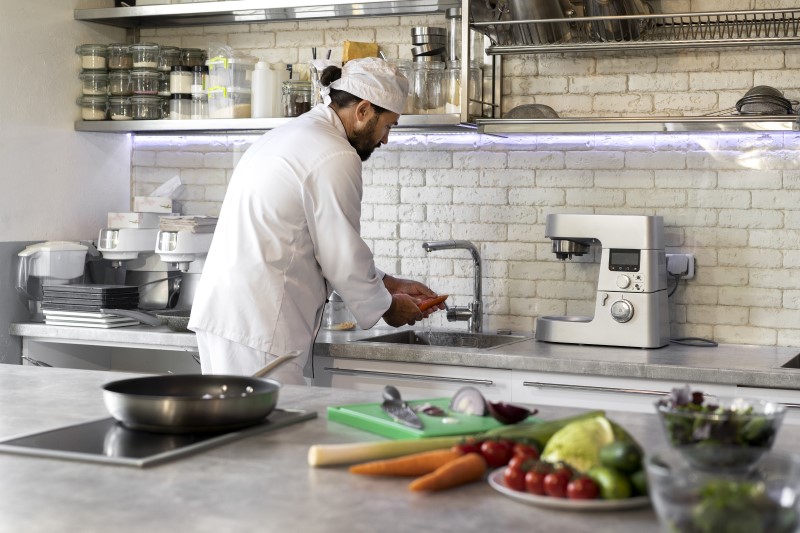Sustainable Commercial Kitchen Designs and Layouts

In today’s world, sustainability goes beyond the choice of ingredients and waste reduction. Sustainability in a commercial kitchen is based on the design of the design of the culinary space with a focus on environmental responsibilities and resource efficiency. Sustainability merges design and layout to enhance efficiency and promote better commercial operations. As businesses strive to reduce their ecological footprint and operational efficiency, understanding the impact of design and layout is paramount to sustainability.
In this article, let’s explore the design and layout of a commercial kitchen to promote sustainability.
The Role of Kitchen Design in Efficiency and Sustainability
The layout and designs are not just about style and aesthetics. It is related to influence and overall space impact. A well-designed kitchen significantly reduces costs and contributes to a greener planet. Through smart design, we can reflect on the commercial kitchen from a much better perspective. Some of the defining aspects are the following:
1: Optimizing workflow with smart layout
A smart kitchen layout minimizes the distance between stations, reducing time and energy spent moving around. The kitchen work triangle traditionally connects the sink, stove, and refrigerator. However, in a commercial setting, the design of the kitchen must consider areas for preparation, cooking, and dishwashing stations. The smart kitchen equipment and workstation placements need to be optimized to reduce unnecessary movements and improve efficiency for the dining experience for customers.
2: Equipment Selection for Energy Efficient
Choosing the right energy-efficient appliance is a fundamental aspect of sustainable kitchen design. Modern commercial kitchen equipment, such as induction cooktops, energy-efficient ovens, and refrigerators with advanced insulation, can significantly reduce the cost of energy consumption. In current kitchen operations, having optimal energy-star-rated appliances leads to high-efficiency standards and reduces the overall energy cost.
3: Ventilation and Airflow Management
Proper ventilation is important for maintaining air quality and temperature control in a commercial kitchen. An efficient ventilation system reduces the need for excessive heat or cooling. It is also important for sustainable kitchens to enhance their air quality through advanced airflow management and let fresh air come into the kitchen. Energy Recovery Ventilation is an aspect that contributes to a lot of improvement. In a modern kitchen, hoods and exhaust systems are placed to maximize the capture of heat and grease.
4: Light Design for Sustainability
Lighting is another critical component of kitchen design that impacts energy consumption. LED lighting is more energy efficient and has a longer lifespan than traditional lighting. It is also an excellent choice for commercial kitchens that could incorporate natural light through windows and skylights. Implementing lighting controls such as dimmers and motion sensors can optimize energy, reducing energy costs and creating a comfortable environment for kitchen staff.
5: Water Conservation
Water usage is a significant concern in commercial kitchens. Incorporating water-saving fixtures, such as low-flow faucets and high-efficiency dishwashers, can substantially reduce water consumption. Additionally, designing the kitchen layout to include efficient drainage systems and greywater recycling can further enhance water conservation efforts.
Sustainability through Design
The commercial kitchen design and layout are foundational to achieving energy efficiency and sustainability. By focusing on workflow optimization, energy-efficient equipment, proper ventilation, sustainable lighting, an eco-friendly environment, and water conservation, businesses can create kitchens that are more cost-effective.
In the competitive landscape of the food industry, sustainability is not just a trend; it is a necessity, and customers demand it. Sustainability in the commercial kitchen integrates sourcing practices that reduce waste and optimize operational efficiency with staff wellness. Emphasizing a sustainable commercial kitchen, the greener future delivers high-quality operations and customer experiences.
